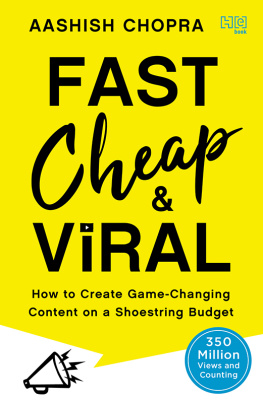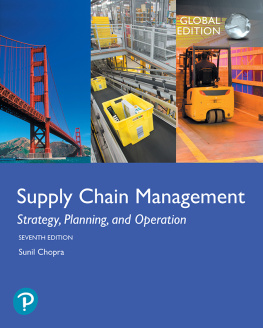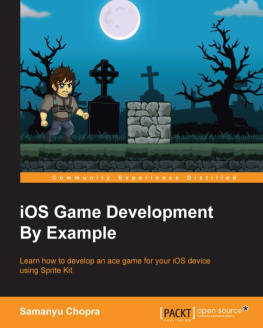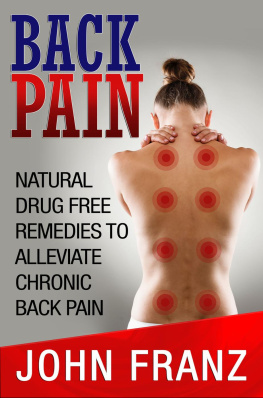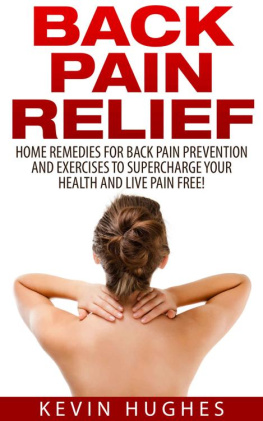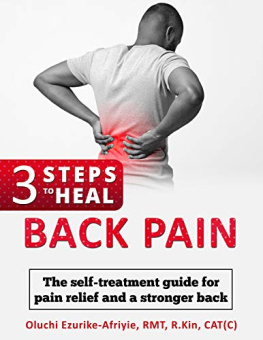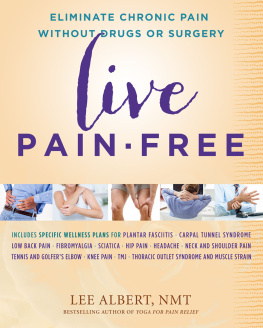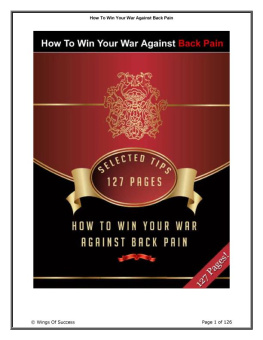Fitness Sutra
ELIMINATE YOUR LOW BACK PAIN
Treatment & Prevention without Drugs, Surgery, or Chiropractic Sessions
Dr. Monika Chopra
www.fitness-sutra.com
Dr. Monika Chopra, 2019
Published by FitSutra Wellness Pvt Ltd, 33, Prachi Residency, Baner Rd., Pune-411045, India
No part of this book may be reproduced, transmitted, or utilized in any form or by any means, electronic or mechanical including photocopying or recording or by any information storage and retrieval system, without written permission from the author.
Although I am a Physiotherapist (PT, for those of you in the USA) and a trained Yoga teacher, my suggestions through this book do not establish a doctor-patient relationship between us. This book is not intended to be a substitute for the medical advice of physicians. You should regularly consult a physician in matters relating to your health particularly with respect to any symptoms that may require diagnosis or medical attention. I advise you to take full responsibility of your safety and be aware of your physical limits. Before practising the exercises described in this book, be sure that your equipment is well maintained. Do not take risks beyond your level of flexibility, aptitude, strength, and comfort level.
This is a work of nonfiction. No names have been changed, no characters invented and no events fabricated. The information provided within this Book is for general informational purposes only. While I have tried to keep the information up-to-date and correct, there are no representations or warranties, expressed or implied, about the completeness, accuracy, reliability, suitability or availability with respect to the information, products, services, or related graphics contained in this book for any purpose. Any use of this information is at the reader's own responsibility. I do not assume and hereby disclaim any liability to any party for any loss, damage, or disruption caused by errors or omissions, whether such errors or omissions result from negligence, accident, or any other cause.
Contents
What to Expect From This Book?
Today low back pain has become one of the most common causes of disability in young and adults. Often it impacts everything in your life from sitting to driving, standing, walking, spending time with your loved ones, doing laundry and kitchen work, engaging in recreational activities, sports and the list continues
At times you get frustrated trying to calm down the pain through various available methods. You need a road map to help to navigate through all the potential problems and what to do about them.
This book is for everyone who is currently suffering from low back ache or has suffered it in the past. It is also for those who want to prevent themselves from low back ache and aim for an active, pain free life.
This book is a step by step guide to understanding the problem and providing a real life solution for low back pain. Through this book, I will teach you which movements and positions can cause you pain and which ones can alleviate pain. I will guide you to what remedies can be started immediately at home to decrease the pain, including hot/cold treatments, Myofascial Release (MFR), strengthening and stretching exercises. I will also give you ergonomic tips on how to protect your back while sitting, standing, lifting objects, lying down, driving etc. thus preventing the onset of low back pain in future.
This book will help you to understand what is going on in your body that is causing so much pain. You can work towards designing the right pain relief plan and be empowered to treat yourself.
Introduction to Low Back Pain
If you have low back pain you are not alone. About 80% of adults experience Low Back Pain (LBP) at some point in their lifetime. LBP can impact everything in your life from walking to driving, even just sitting at your desk can cause extreme pain. It is the most common cause of job related disability and a leading contributor to missed work days.
Who Are Prone To Low Back Aches
Men and women are equally affected by LBP, which can range in intensity from a dull, constant ache to a sudden, sharp sensation that leaves one incapacitated. Onset of pain can be sudden, as a result of an accident or by lifting, pulling or pushing something heavy, or it can develop over time due to age-related changes of spine. Sedentary lifestyles can also lead to LBP, especially when a weekdays routine of getting too little exercise is punctuated by strenuous weekend workout. Driving or sitting in hunched position, bending awkwardly or being in this position for long periods of time are common causes of LBP. Overweight people, smokers, pregnant females, stressed or depressed people; people on long term use of medicines that weaken bones e.g. corticosteroids and those leading sedentary lifestyle are more at risk of low back pain .
Classification of Low Back Pain on Basis of Duration of its Existence
- Acute or Short Term Low Back Pain : Acute low back pain lasts for a few days or a few weeks. It tends to resolve on its own with self-care and there is no residual loss of function. The majority of low back pain is mechanical in nature, i.e. there is a disruption in the way the components of the back (i.e. spine, muscles, intervertebral discs and nerves) fit together and move.
- Sub-acute Low Back Pain : When the low back pain persists for six weeks to three months it is known as sub-acute low back pain. This type of pain is usually mechanical in nature (such as a muscle or joint pain), but is prolonged. A medical checkup should be considered and is advisable if the pain is severe and limits ones ability to participate in activities of daily living, sleeping and working.
- Chronic Low Back Pain : Low back pain that lasts over three months is considered as chronic low back pain. This type of pain is usually severe, does not respond to initial treatments and requires a thorough medical investigation to determine the exact source of the pain.
Muscles that Support your Lower Back How their Weakness or Tightness can lead to Low Back Pain
The lower back supports the weight of upper body and provides mobility for the everyday movements including bending and twisting. The muscles in the lower back are responsible for flexing, extending and rotating the hips while walking as well as supporting the spinal column. Nerves in the low back supply sensation and power to the muscles in the pelvis, legs, and feet.
Most acute and chronic low back pain results from injury to muscles, ligaments, joints, discs or nerve involvement.
Muscles Supporting Low Back and their Function
Soft tissues around the spine play a key role in low back. These are a large and complex group of muscles that work together to support the spine and help in
- Flexion (bending forward)
- Extension (bending backwards)
- Side flexion (side bending) and
- Rotation movement at the spine.
- Flexor Muscles that are attached to the front of spine enable forward bending (flexion), lifting and arching of lower back.
- Extensor Muscles that are attached to the back of the spine enable standing and lifting objects. These muscles include mainly erector spinae (which helps in holding up the spine) and gluteal muscles (hip muscles).
- Oblique Muscles that are attached to the sides of the spine, help rotate the spine.
- Along with the above mentioned muscles, there are hip flexors (muscles present in front of the hip joint) and hip extensors (especially hamstrings) present behind hip joint.


